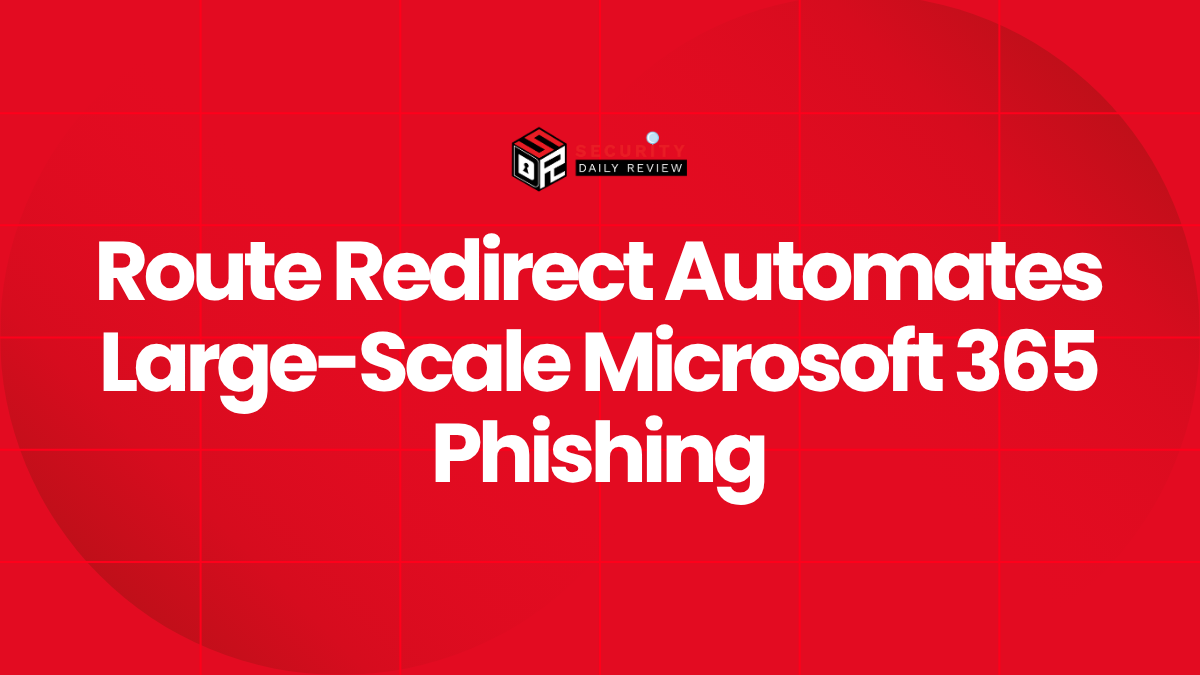A newly emerged phishing-as-a-service (PhaaS) platform dubbed “Quantum Route Redirect” (QRR) has drawn increasing attention in the cybersecurity community for its sophisticated use of fake Microsoft 365 login pages distributed through a network of over 1,000 malicious domains. Designed to efficiently automate credential harvesting at scale, the service demonstrates phishing operators’ shift toward professionalization and scalability through automation.
Quantum Route Redirect Scales Credential Theft
Cybercriminal groups are now leveraging QRR to automate the creation, hosting, and deployment of phishing campaigns specifically targeting Microsoft 365 (M365) users. The tool-chain appears to streamline previously manual attack components—URL distribution, redirection, and credential capturing—through a framework that blends automation with obfuscation.
Platform Offers Phishing-as-a-Service Capabilities
At its core, Quantum Route Redirect functions as a modular, low-code phishing platform. Key capabilities include:
- Automated generation of fake Microsoft 365 login screens
- URL redirection cloaking to pretend the user is on a legitimate domain
- Geo-fencing and IP filtering to evade bots and certain security vendors
- Centralized credential capture and logging for attackers
This makes the platform highly accessible to threat actors with minimal technical skills, further lowering the barrier to entry in phishing operations.
Infrastructure Shows Unseen Scale and Sophistication
QRR’s infrastructure distinguishes it from typical phishing campaigns. Security researchers have identified more than 1,000 domains linked to the platform, all actively used to host and serve phishing content tailored toward Microsoft login portals. These domains are:
- Often recently registered and rotated to avoid detection
- Hosted through bulletproof or fast-flux infrastructure
- Obfuscated to evade automated email scanners and URL reputation filters
The URLs usually follow a method known as “open redirect abuse,” where legitimate websites unwittingly send users through a redirection system ending on the attacker’s phishing page. These redirects make the final destination appear trustworthy, thereby enhancing the phishing success rate.
Microsoft 365 as a Prime Phishing Target
Microsoft 365 remains a top target for attackers due to its widespread adoption across both enterprise and government sectors. Credentials from compromised accounts are frequently sold on cybercrime marketplaces or used to facilitate Business Email Compromise (BEC), lateral movement, or data exfiltration.
Because access to a single M365 account can yield everything from emails and calendars to documents and internal chats, successful phishing campaigns using tools like QRR often serve multiple cybercrime goals.
Security Evasion and Detection Challenges
Tools like Quantum Route Redirect present heightened risks because of their multi-layered evasion capabilities. Some of the obfuscation and counter-detection mechanisms employed by the platform include:
- JavaScript-based fingerprinting to block traffic from bots or researchers
- Conditional redirection depending on originating IP or geolocation
- Custom HTML/CSS kits that precisely mimic M365 branding
Many traditional email security gateways struggle to detect these phishing attempts because the initial URL may look benign or pass domain verification checks due to use of compromised third-party redirects.
Mitigation Strategies for Defenders
Security teams must tailor phishing defense strategies to counter modern platforms like QRR. Key preventive measures and detection mechanisms include:
- Implementing Advanced Email Filtering – Security solutions should support URL rewriting and time-of-click protection.
- User Behavior Monitoring – Login anomalies, such as changes in location or browser fingerprint, should trigger alerts.
- Blocking Open Redirects – Organizations should secure their web applications to prevent attackers from abusing redirect functionality.
- Employee Awareness Training – Ongoing phishing awareness campaigns are critical to helping users recognize subtle anomalies in login portals.
- Zero Trust Access Models – Valid login credentials should not equate to full access. Context-aware policies for conditional access should be enforced.
As phishing automation platforms like Quantum Route Redirect rise in popularity, defenders must evolve from static rule-based models to more dynamic, behavior-driven detection and response.
Looking Ahead: Automation Will Drive Phishing at Scale
Quantum Route Redirect underscores a broader trend: phishing operations are becoming more modular, automated, and service-oriented. As attackers continue refining their tactics with platforms capable of wide-scale automation, organizations must mirror this sophistication in their cyber defense posture.
With Microsoft 365 being an especially lucrative target, threat intelligence, proactive filtering, and diligent credential hygiene will remain central to prevention in the evolving phishing threat landscape.









